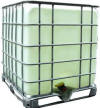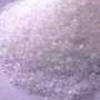|
Mubychem Group, is a mature manufacturing company since generations. Engaged in manufacture and supply of Pharmaceutical Intermediates and Excipients, Oil field & fracturing chemicals, Specialty tailor made grades of chemicals in India. With several manufacturing facilities in India and world wide contacts and toll manufacturers we are exporting to all the countries in the world.. |
The company and associated units have certificates & accreditations like FDA - GMP approval; ISO-9001 Certified; "REACH" Registered; ISO-22000; Kosher Certified; Halal Certified; HACCP. We offer Commercial Pure & Pharmacopoeia IP BP USP FCC Food Grade ACS AR Analytical Reagent Grades of Chemicals |
|
Urea Manufacturers, SDS MSDS Sheet
Urea USP BP IP FCC Food grade Manufacturers
Urea SDS MSDS Sheet, Material Safety Data Sheet
1. Product Identification
Synonyms: Carbamide resin; Isourea.
CAS No.: 57-13-6
EINECS EC Number: 200-315-5
Molecular Weight: 60.06
Chemical Formula: (NH2)2CO
2. Hazards Identification
GHS, Globally Harmonized System Classification in accordance with 29 CFR 1910
Classification according to Regulation (EC) No 1272/2008
Not a hazardous substance or mixture according to Regulation (EC) No. 1272/2008.
This substance is not classified as dangerous according to Directive 67/548/EEC.
Labeling according to GHS & Regulation (EC) No 1272/2008
GHS Label Elements NONE |
Signal Word: None
Hazards not otherwise classified (HNOC):
May causes mild skin irritation.
May causes mild eye irritation.
Precautionary statements:
P261: Avoid breathing dust/fume/gas/mist/vapors/spray.
P262: Do not get in eyes, on skin, or on clothing.
P281: Use personal protective equipment as required.
P302+P352 - IF ON SKIN: Wash with plenty of soap and water.
P303+P361+P353 - IF ON SKIN (or hair): Remove/Take off immediately all contaminated clothing. Rinse skin with water/shower.
P304 + P340 - IF INHALED: Remove victim to fresh air and keep at rest in a position comfortable for breathing.
P305 + P351 + P338 - IF IN EYES: Rinse cautiously with water for several minutes. Remove contact lenses, if present and easy to do. Continue rinsing.
P337+313: If eye irritation persists get medical advice/attention.
3. Composition/Information on Ingredients
Ingredient: Urea
CAS No.: 57-13-6
EINECS EC Number: 200-315-5
4. First Aid Measures
Always seek medical attention after first aid measures are provided.
Inhalation: Remove to fresh air. If not breathing, give artificial respiration. If breathing is difficult, give oxygen. Get medical attention.
Ingestion: Induce vomiting immediately as directed by medical personnel. Never give anything by mouth to an unconscious person. Get medical attention.
Skin Contact: Wash affected areas with soap and water for at least 15 minutes while removing contaminated clothing and shoes. Wash clothing before reuse. Thoroughly clean shoes before reuse. Get medical attention if symptoms occur.
Eye Contact: Immediately flush eyes with plenty of water for at least 15 minutes, lifting lower and upper eyelids occasionally. Get medical attention immediately.
5. Fire Fighting Measures
Fire: Urea is not considered to be a fire hazard.
Fire Extinguishing Media: Use water spray, alcohol-resistant foam, dry chemical or carbon dioxide. Use means suitable for extinguishing surrounding fire.
Special Information: In the event of a fire, wear full protective clothing and NIOSH-approved self-contained breathing apparatus with full face piece operated in the pressure demand or other positive pressure mode.
6. Accidental Release Measures
Ventilate area of leak or spill. Wear appropriate personal protective equipment. Spills: Sweep up and containerize for reclamation or disposal. Vacuuming or wet sweeping may be used to avoid dust dispersal.
7. Handling and Storage
Keep dry. It will absorb moisture from air. If storage piles become wet, surrounding floor may be slippery. Reacts with hypo chlorites to form nitrogen trichloride, which explodes spontaneously in air. Reacts with nitric acid to form urea nitrate that decomposes explosively when heated.. Store in a tightly closed container. Protect container from physical damage. Containers may be hazardous when empty.
8. Exposure Controls/Personal Protection
Airborne Exposure Limits:
-AIHA Workplace Environmental Exposure Limit (WEEL):
10 mg/m3, 8-hour TWA
Ventilation System:
A system of local and/or general exhaust is recommended to keep employee exposures below the Airborne Exposure Limits. Local exhaust ventilation is generally preferred because it can control the emissions of the contaminant at its source, preventing dispersion of it into the general work area. Please refer to the ACGIH document, Industrial Ventilation, A Manual of Recommended Practices, most recent edition, for details.
Personal Respirators (NIOSH Approved):
If the Urea exposure limit is exceeded and engineering controls are not feasible, a half face piece particulate respirator (NIOSH type N95 or better filters) may be worn for up to ten times the exposure limit or the maximum use concentration specified by the appropriate regulatory agency or respirator supplier, whichever is lowest. A full-face piece particulate respirator (NIOSH type N100 filters) may be worn up to 50 times the exposure limit, or the maximum use concentration specified by the appropriate regulatory agency, or respirator supplier, whichever is lowest. If oil particles (e.g. lubricants, cutting fluids, glycerin, etc.) are present, use a NIOSH type R or P filter. For emergencies or instances where the exposure levels are not known, use a full-face piece positive-pressure, air-supplied respirator. WARNING: Air-purifying respirators do not protect workers in oxygen-deficient atmospheres. If heat is involved, an ammonia/methylamine, dust/mist cartridge may be necessary.
Skin Protection: Wear protective gloves and clean body-covering clothing.
Eye Protection:: Use chemical safety goggles and/or full face shield where dusting or splashing of solutions is possible. Maintain eye wash fountain and quick-drench facilities in work area.
9. Physical and Chemical Properties
Appearance: Urea is white crystals or white powder.
Odor: Develops odor of ammonia.
Solubility: Very soluble in water.
Specific Gravity: 1.32 @ 20C/4C
pH: 7.2 (10% in water)
Melting Point: 132 - 135C (270 - 275F)
10. Stability and Reactivity
Stability: Urea is stable under ordinary conditions of use and storage.
Hazardous Decomposition Products: Urea decomposes upon heating and can form products including ammonia, oxides of nitrogen, cyanuric acid, cyanic acid, biuret, carbon dioxide.
Hazardous Polymerization: Will not occur.
Incompatibilities: Urea reacts with calcium hypochlorite or sodium hypochlorite to form the explosive nitrogen trichloride. It is incompatible with sodium nitrite, gallium perchlorate, strong oxidizing agents (permanganate, dichromate, nitrate, chlorine), phosphorus pentachloride, nitrosyl perchlorate, titanium tetrachloride and chromyl chloride.
11. Toxicological Information
Urea Oral rat LD50: 8471 mg/kg. Investigated as a tumorigen, mutagen, reproductive effector.
Carcinogenicity: No component of this product present at levels greater than or equal to 0.1% is identified as possible or confirmed human carcinogen by IARC, ACGIH, OSHA and NTP.
12. Ecological Information
Toxicity to fish: LC50 - Poecilia reticulata (guppy) - 17,500 mg/l - 96 h(Urea)
Toxicity to daphnia and other aquatic invertebrates: EC50 - Daphnia magna (Water flea) - 3,910 mg/l - 48 h(Urea)
Environmental Fate: When released to soil, Urea will hydrolyze into ammonium in a matter of days to several weeks. When released into the soil, this material may leach into groundwater. When released into water, this material may biodegrade to a moderate extent. When released into water, this material is not expected to evaporate significantly. Urea has an experimentally-determined bio-concentration factor (BCF) of less than 100. This material is not expected to significantly bio-accumulate. When released into the air, this material is expected to be readily degraded by reaction with photo chemically produced hydroxyl radicals. When released into the air, Urea is expected to have a half-life of less than 1 day.
Environmental Toxicity: Urea can be toxic to domestic animals and has caused poisonings when it was applied unevenly on pastures as a fertilizer. Large amounts of urea can damage plant seedlings and inhibit germination. At high concentrations, urea can be toxic to aquatic life.
Results of PBT and vPvB assessment: This substance/mixture contains no components considered to be either persistent, bioaccumulative and toxic (PBT), or very persistent and very bioaccumulative (vPvB) at levels of 0.1% or higher.
13. Disposal Considerations
Urea is not considered a hazardous waste under Federal Hazardous Waste Regulations 40 CFR 261. Follow standard disposal procedures. Dispose of container of Urea and unused contents in accordance with legal requirements.
14. Transport Information
DOT (US): Not dangerous goods
IMDG: Not dangerous goods
IATA: Not dangerous goods
ADT/RID: Not dangerous goods
15. Regulatory Information
USA Regulations:
TSCA: CAS# 57-13-6 is listed on the TSCA inventory.
Health &. Safety Reporting List: None of the chemicals are Listed.
Chemical Test Rules: None of the chemicals in this product are under a Chemical Test Rule.
Section 12b: None of the chemicals are listed under TSCA Section 12b.
TSCA Significant New Use Rule: None of the chemicals in this material have a SNUR under TSCA.
CERCLA Hazardous Substances and corresponding RQs: None of the chemicals in this material have an RQ.
SARA Section 302 Extremely Hazardous Substances: None of the chemicals in this product have a TPQ.
SARA Codes: CAS # 57-13-6: immediate.
Section 313: No chemicals are reportable under Section 313.
California Proposition 65: This product contains no chemicals known to the State of California to cause cancer, birth defects, or other reproductive harm
Canada WHMIS (Canada): Not controlled under WHMIS (Canada). This product is on the Domestic Substances List (DSL). Canada NDSL: No
16. Other Information
Disclaimer:
***************************
Our company provides this Urea SDS information sheet contained herein in
good faith but makes no representation as to its comprehensiveness or
accuracy. This Urea MSDS sheet is intended only as a guide to the
appropriate precautionary handling of the material by a properly trained
person using this product. Individuals receiving the information must
exercise their independent judgment in determining its appropriateness
for a particular purpose.
***************************
Urea Manufacturers at:
MUBY CHEMICALS GROUP
DONGRI-CHINCHBUNDER, MUMBAI 400009, INDIA
TEL: (OFFICE)
91-22-23770100, 91-22-23726950, 91-22-23774610, 23723564.
e-mail: info@mubychem.com









